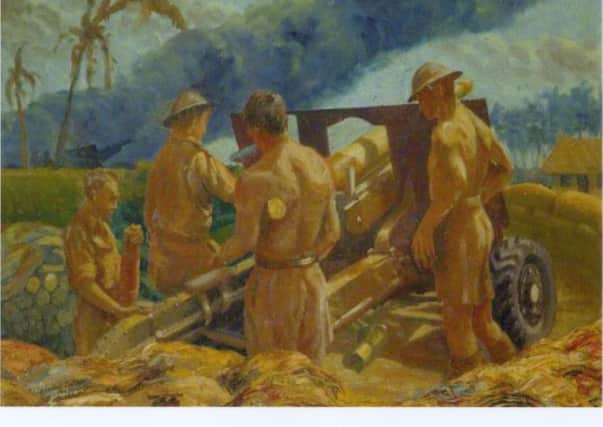Our Yeomen who said goodbye to the horses and hello to Hell


It was a slur that was never, ever heard again after 1942, the year these Yeomen went from the ‘fireside’ and into the furnace of Malaya as it was overrrun by Japanese invaders.
And they went there as artillerymen, a seemingly strange role for a regiment which, in its original incarnation, was part of the cavalry.
Advertisement
Hide AdAdvertisement
Hide AdHowever, the modern battlefield had no place for the Yeomen’s beloved steeds and they swapped them for the far-less loveable big guns at the outbreak of World War 2, the Yeomanry forming two new units of the Royal Artillery, the 155th and 156th Field Regiments.
It is the fate of the first of these, the 155th, which is the subject of a long-anticipated book, carrying that ironic title The Fireside Sojers, published this week. The co-authors, Agnes McEwan and Campbell Thomson, will be familiar to Gazette readers by their championing of the memory of the Yeomanry over many years.
This book, however, probably serves as the most effective memorial yet to the 155th; it is certainly the most informative and exhaustive record you could possibly conceive, the authors, somehow, managing to chart the individual stories of each of the men with the 155 after it went into murderous Japanese captivity following a valiant but doomed effort to stem the invading tidalwave eventually engulfing Malaya and the ‘fortress’ of Singapore.
This is a truly amazing feat of research, the 170 pages telling the stories of every Yeoman from Gunner Harold Allan on the first page to Lance Corporal Francis Wilson on the last.
Advertisement
Hide AdAdvertisement
Hide AdUnlike the vast majority of military history books, this does not tell the story of the 155th from a distance, relating regimental manoeuvres and campaigns.
This is the story of the 155 told via the experiences of the men who were living that story and making that history — and suffering the nightmare of captivity, many dying as slave labour in their captors’ mines and on the notorious Death Railway.
As the unit was partly recruited locally, many reading this will find they have some family connection to one of the men honorably mentioned here, be they Sergeant William Anderson of Kirkfieldbank, a father of five now resting in a war cemetery in Hong Kong or Gunner Samuel Jess, the Lanark man who survived savage beatings and the terrible conditions of the Kinkaseki copper mine to return home in 1945.
Fellow Lanarkian Gunner Robert McGill also somehow survived the mines; Carlukian Joseph O’Connor also made it home despite the living hell of building the Death Railway through Burma. Although fellow Carlukian Sergeant Robert Russell also made it home at the end of he war, his privations during it are thought to have led to his premature death at the age of 61 in 1981.
Advertisement
Hide AdAdvertisement
Hide AdOne of the longest entries in the book belongs to Captain John Fraser Stewart of Lanark; he attended the Lanark Grammar School his father, a noted architect, had helped design; survivors of the unit remember him with huge respect.
He repeatedly stood up to his captors to attempt to protect his men from brutality while suffering tortures himself. He was very much an organiser and, although dreadfully ill, he was still working on creating a proper water supply system for his men’s prison when he finally died just months before liberation in June, 1945.
Another Lanark officer, Major John Wilson, who lived in Mousebank Road, was killed in action in Malaya in 1942 before the fall of Singapore, staying and fighting with his men while recovering from earlier wounds.
The Fireside Sojers is a fitting tribute to the men above and all the many, many others whose stories are told between its covers. Copies are available by phoning 01698 382330 or via email at [email protected].